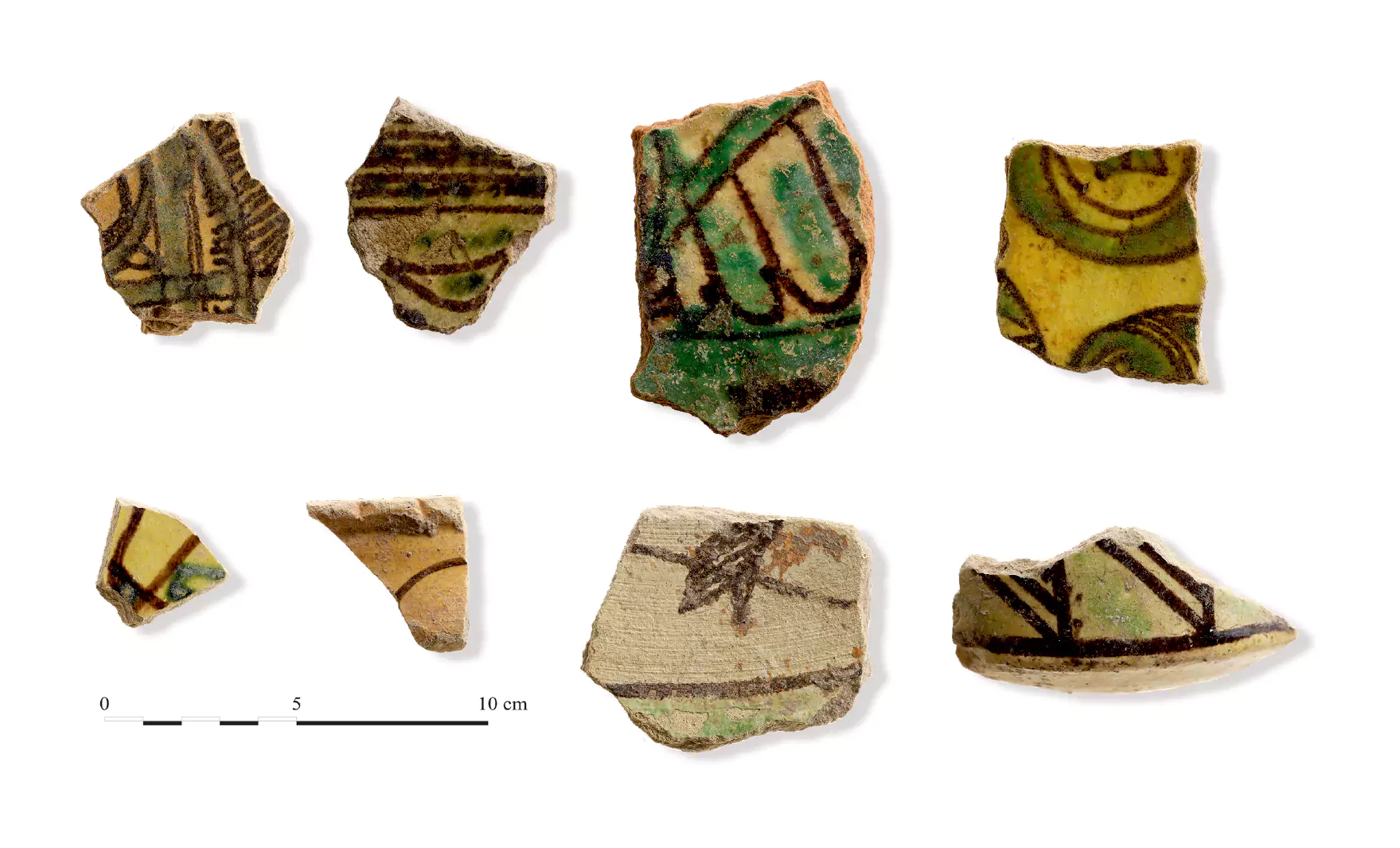
11 Sector T2 - Late Antique and Medieval period in Musti
Defining early Islamic phases of occupation is a common problem for archaeologists working in North Africa. This difficulty is mainly due to our inadequate understanding of local and regional pottery production classes and the disturbed nature of the archaeological contexts. The excavations carried out in the area of the Late Antique shops attached to the main street of Musti offer us a rare opportunity to improve our knowledge in this respect. The well-preserved archaeological stratification in section L2 B3 illustrates the complete chronological sequence from the mid-6th to the 12th century. The separation of the phases dated to the period between the late 7th and mid 9th centuries has also been confirmed by radiocarbon dating. This has provided us with a starting point for a more in-depth study of the evolution of the ceramic repertoire, including various types of local coarseware as well as fine-glazed imports.
Another more important detail is the opportunity to observe the changing and evolving character of the urban landscape in this area. It seems clear that, during the early Islamic period, the representative shopping area finally lost its monumental character. The new inhabitants clearly did not retain the old spatial division of the Roman city. The evolution of urban space therefore began to be determined by less than pragmatic factors. As a result, the main commercial area of the ancient city was transformed into a dumping ground for agro-pastoral activities.


